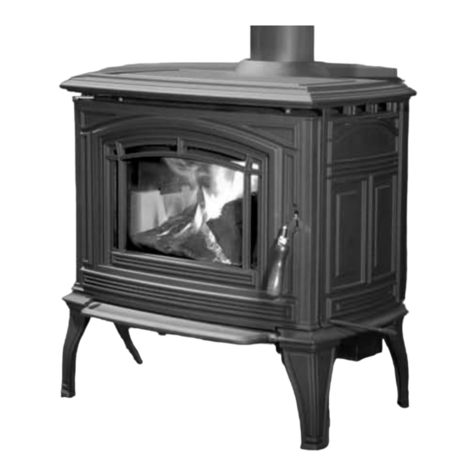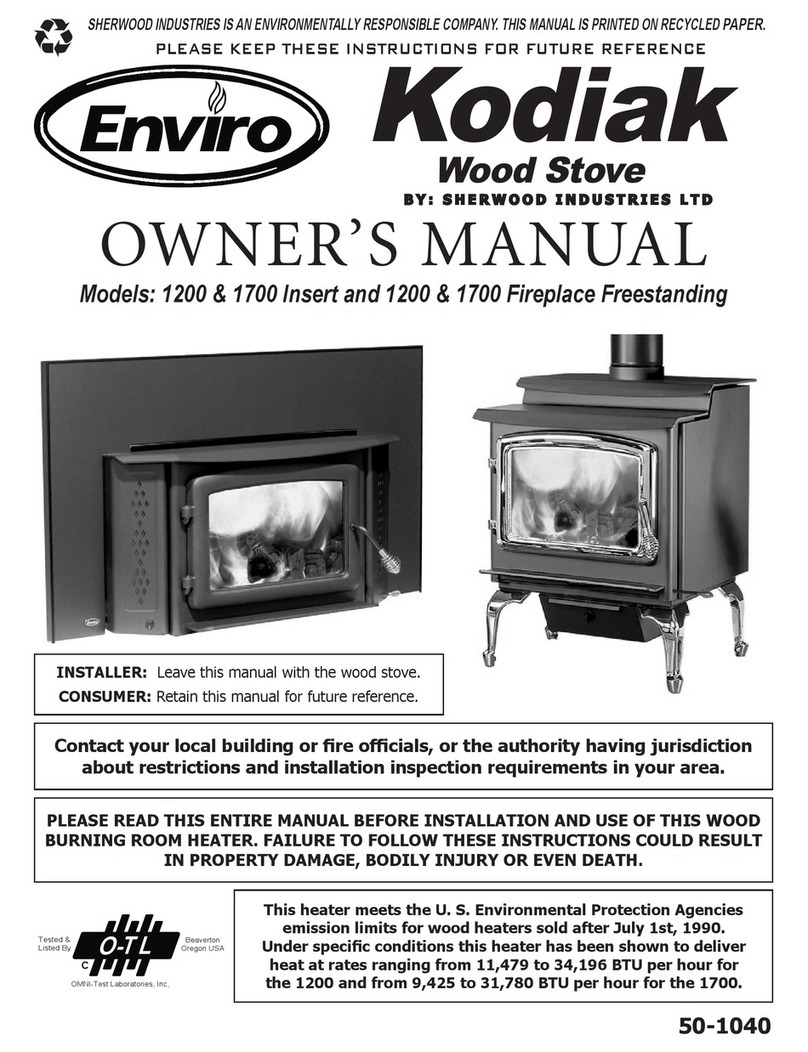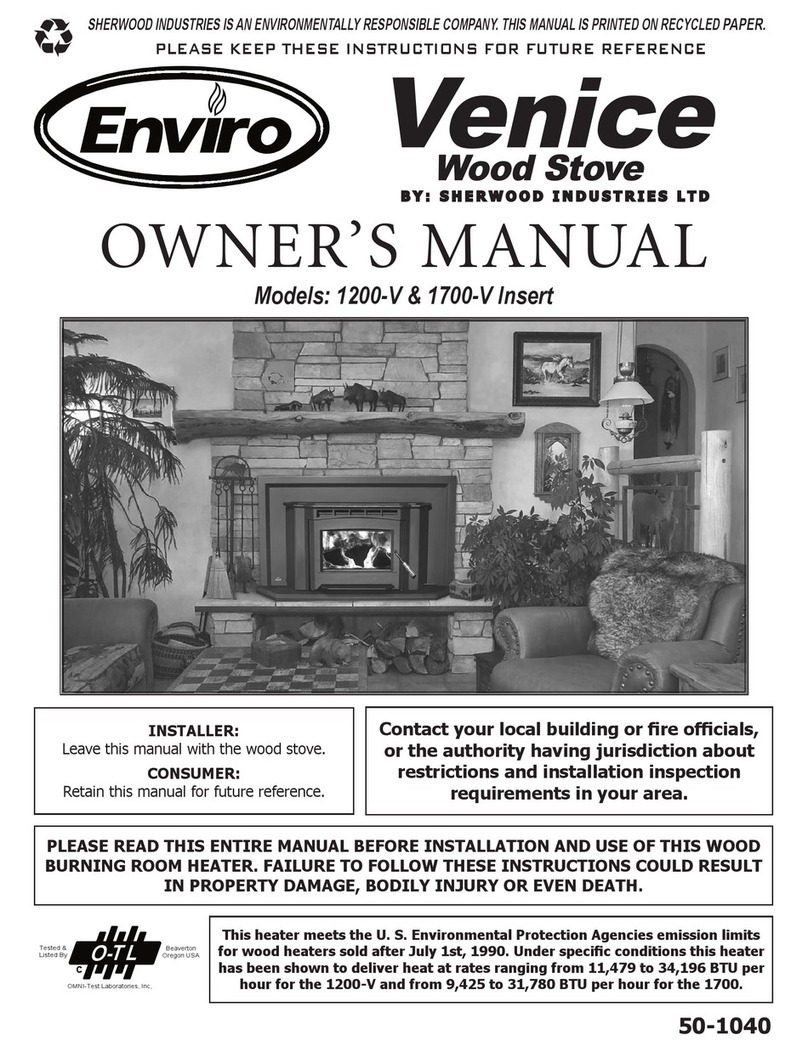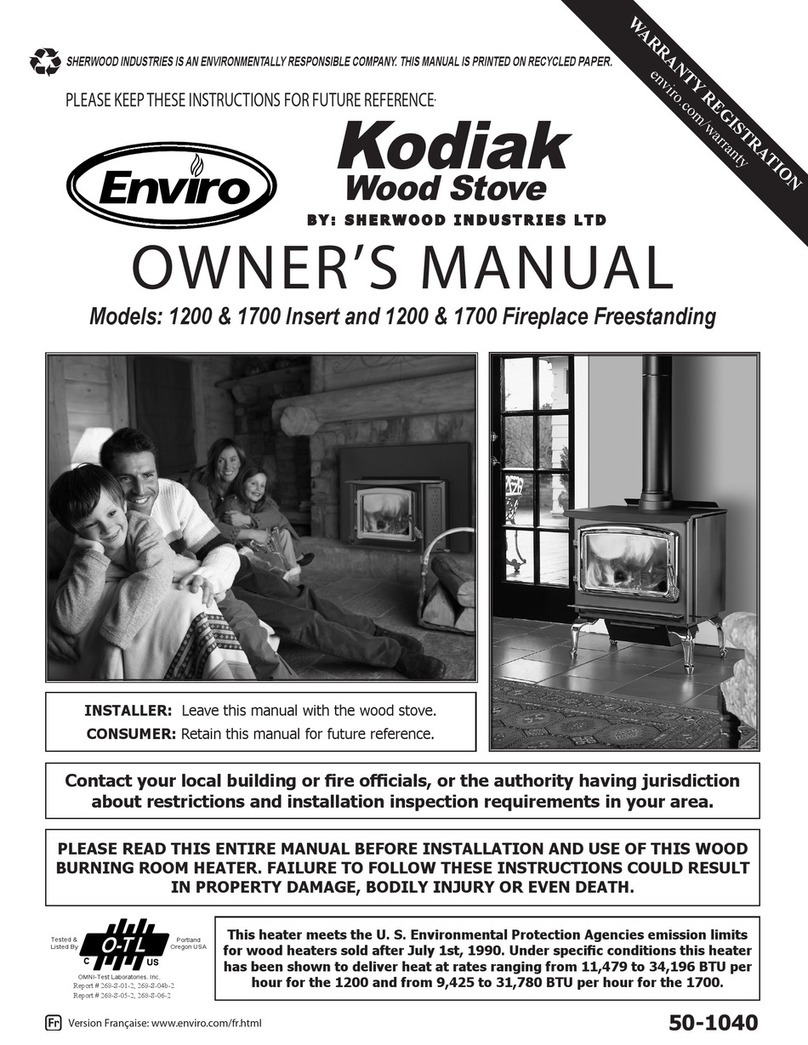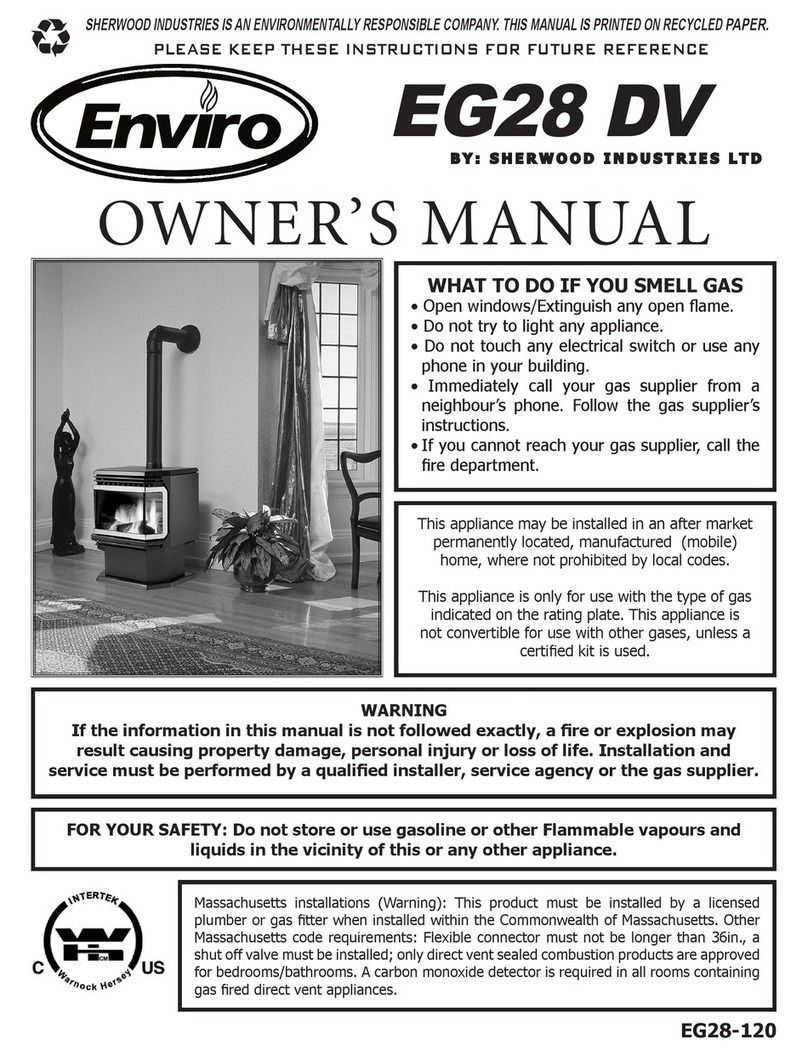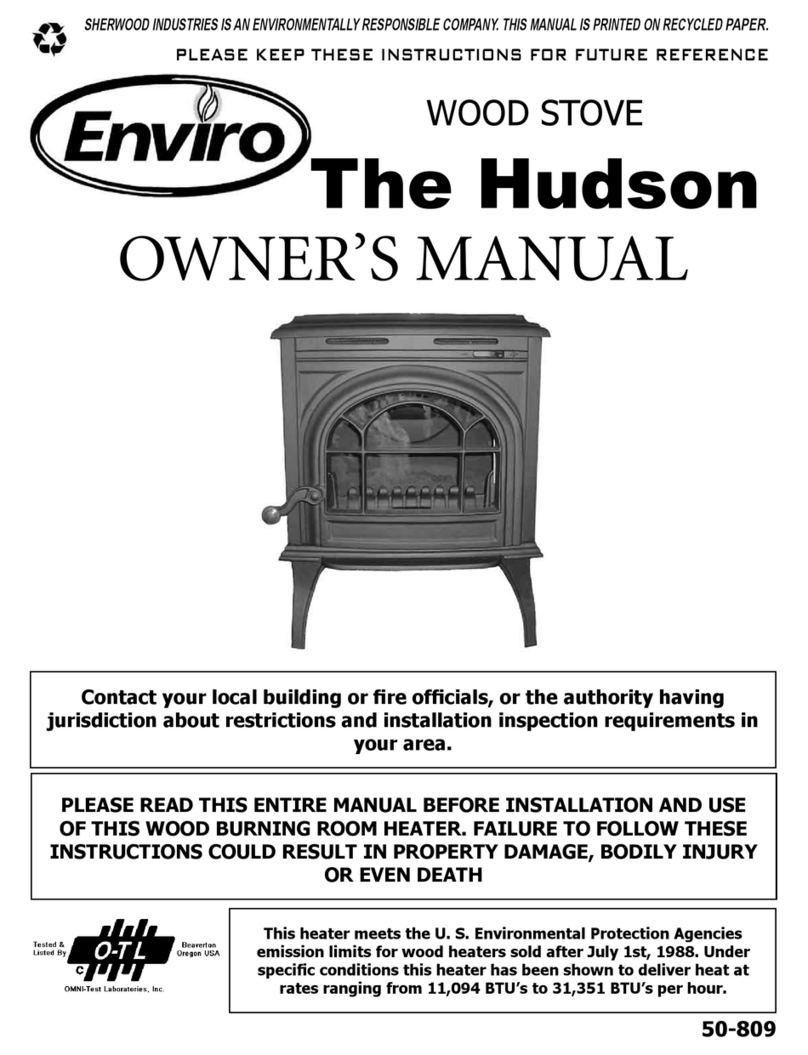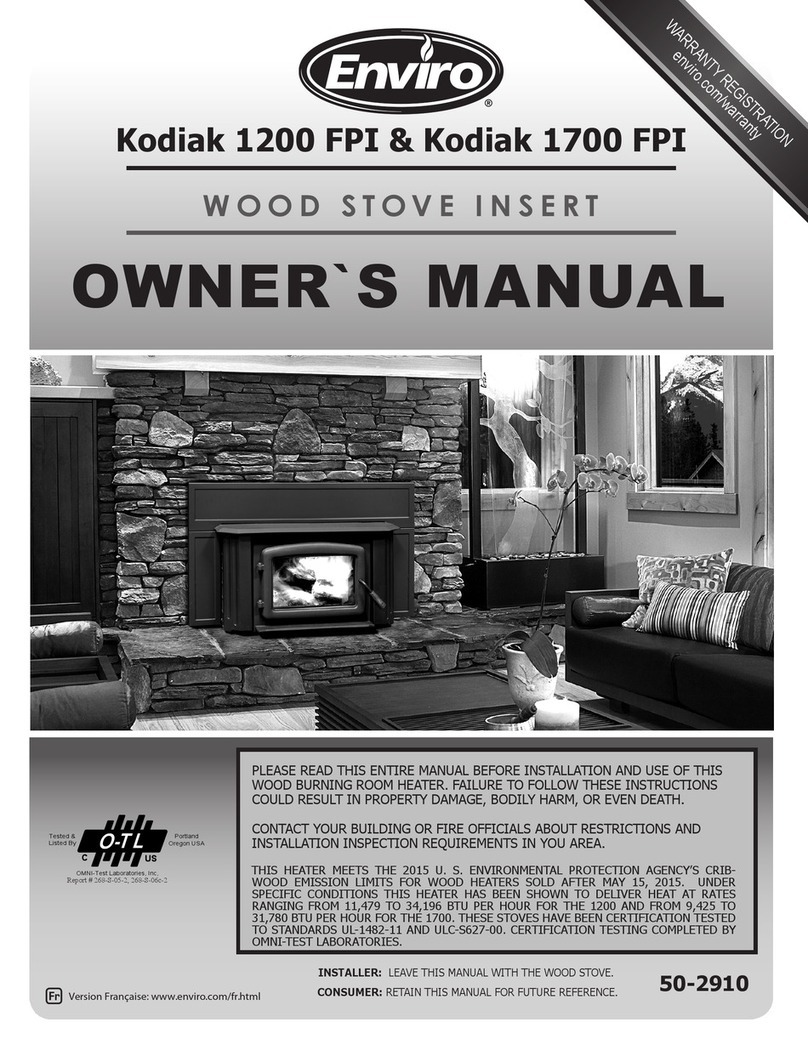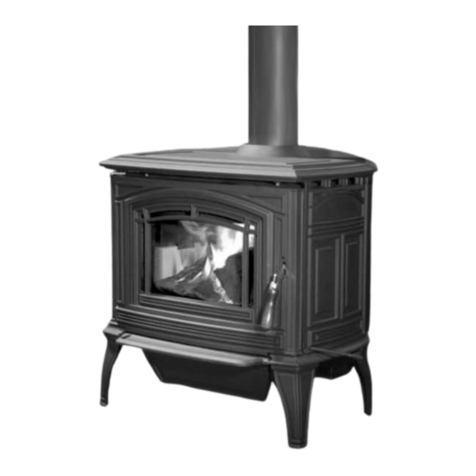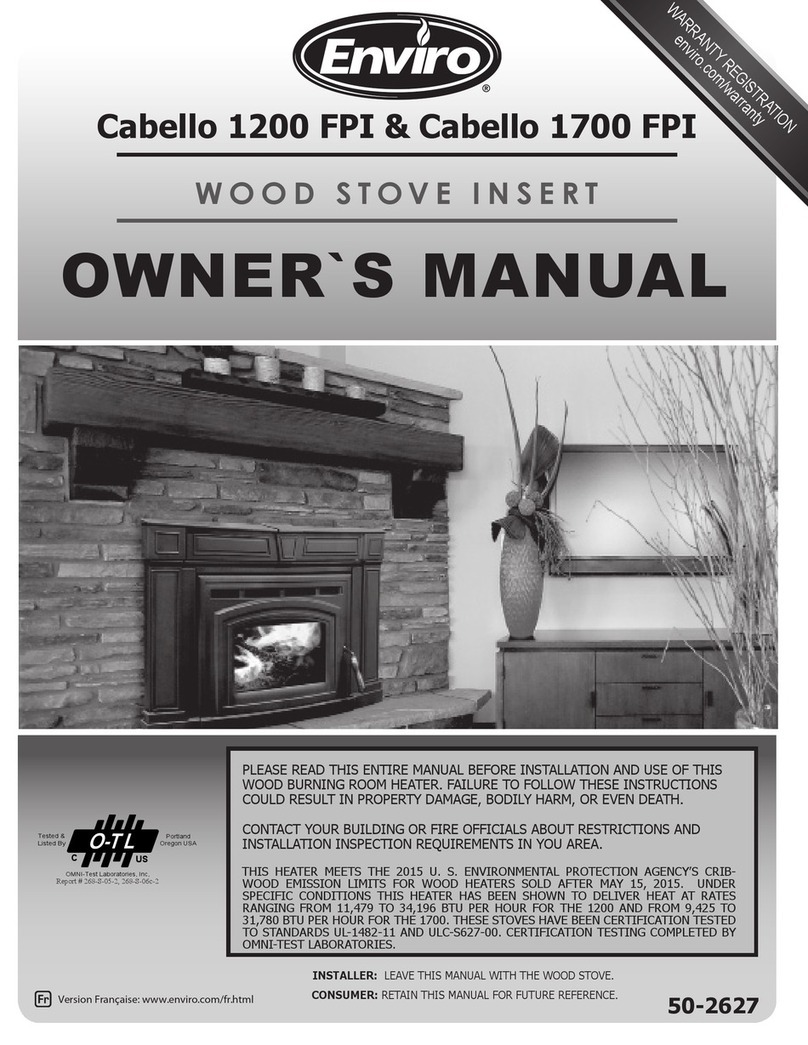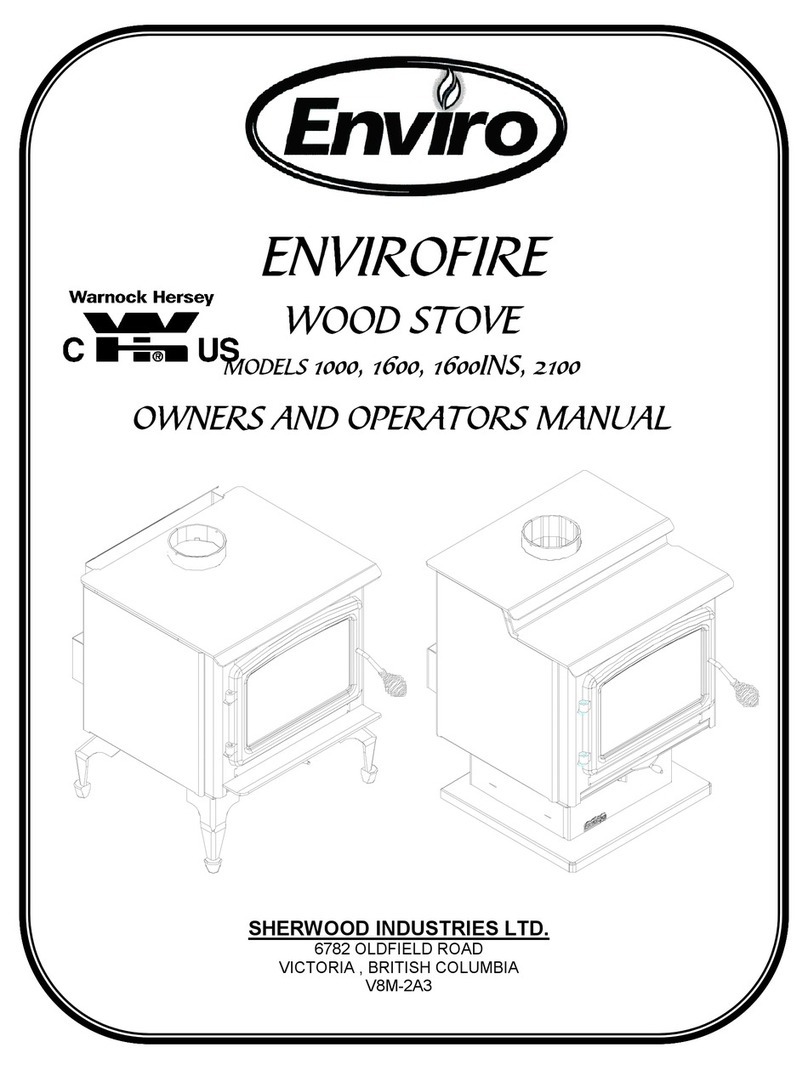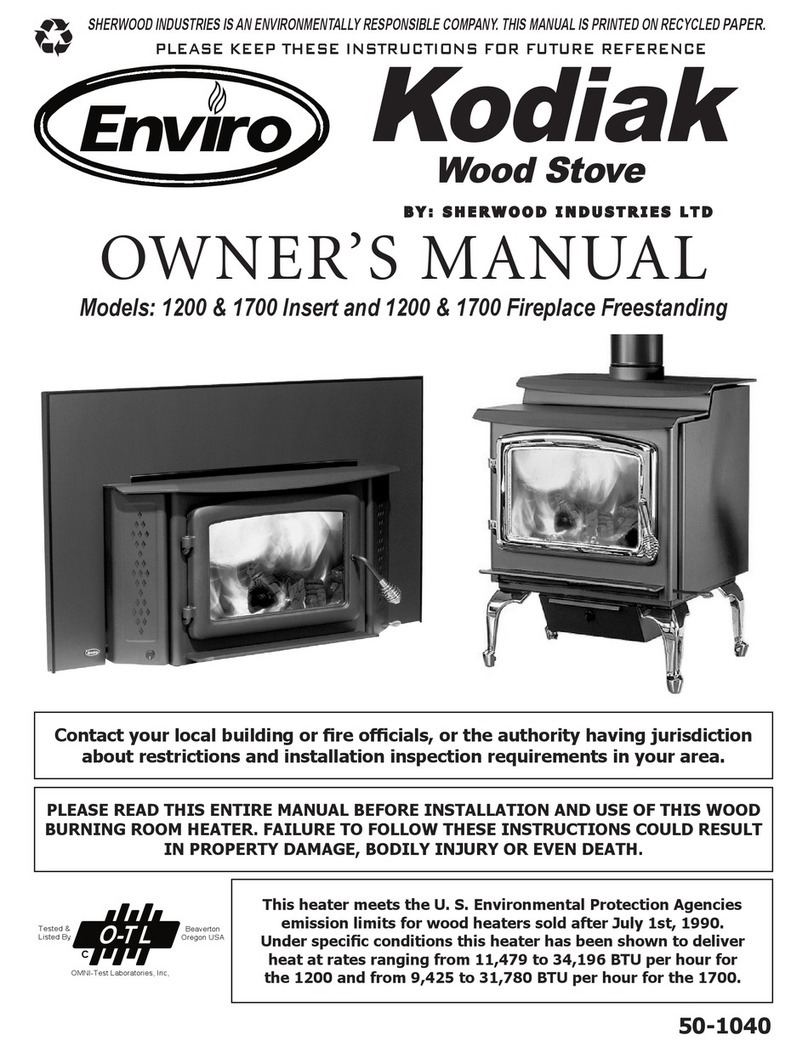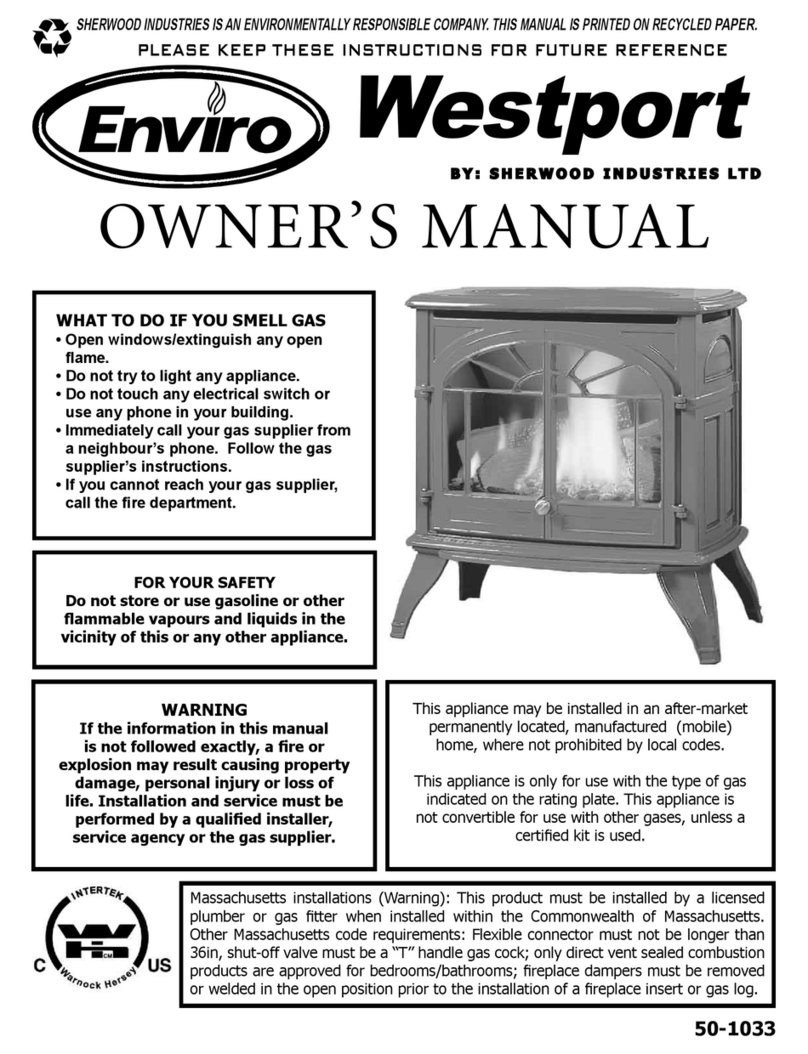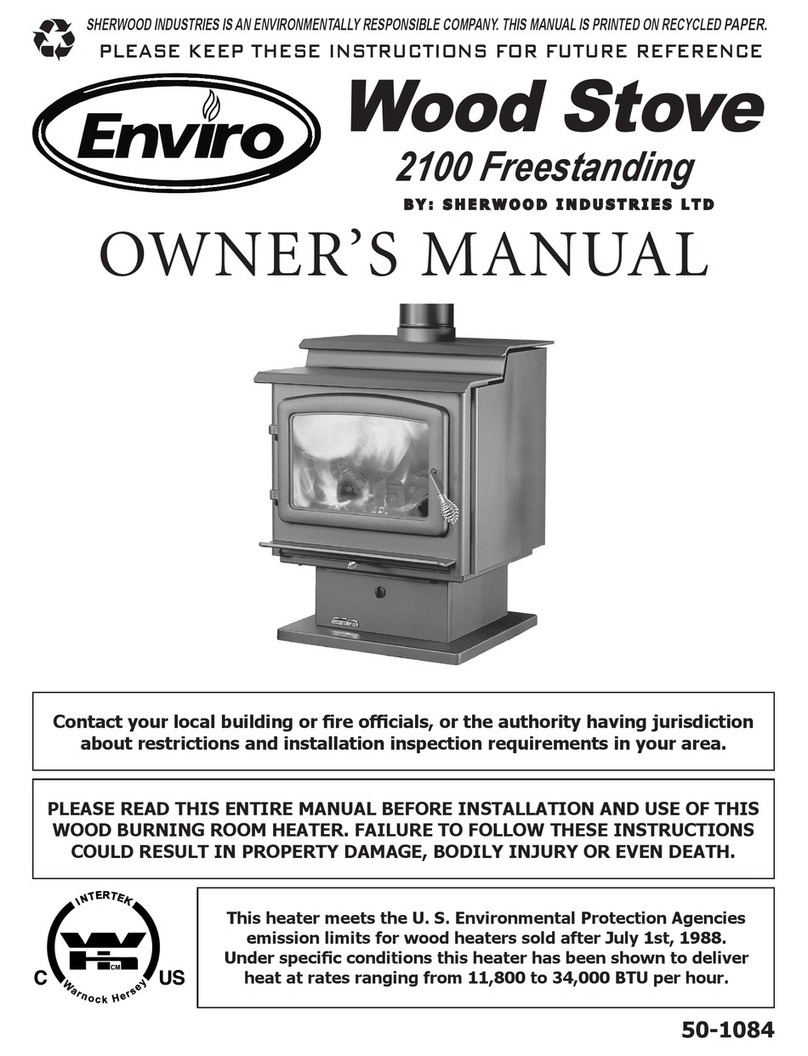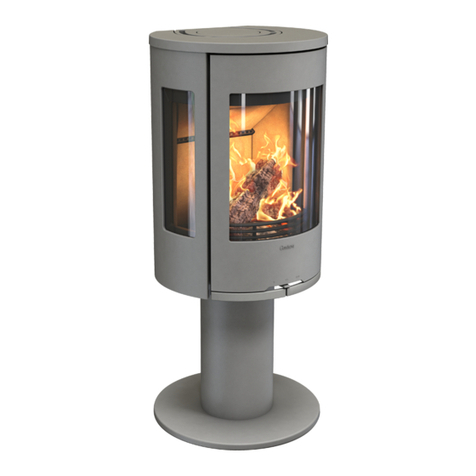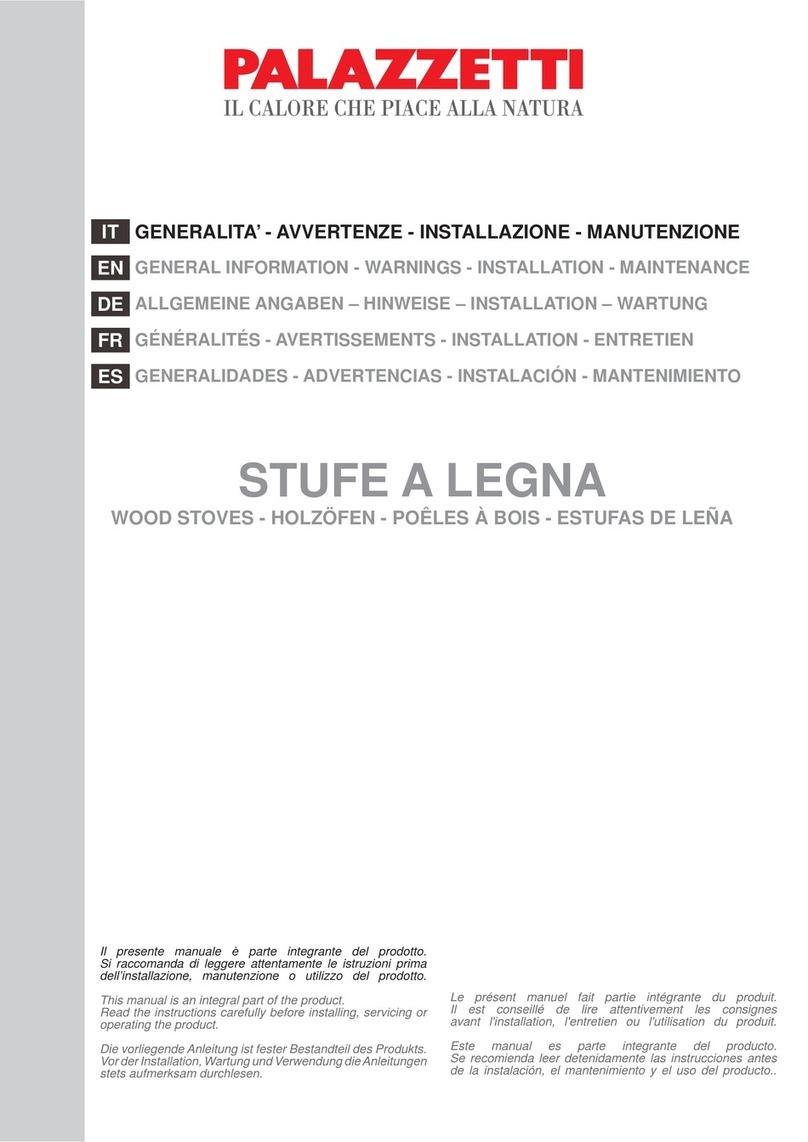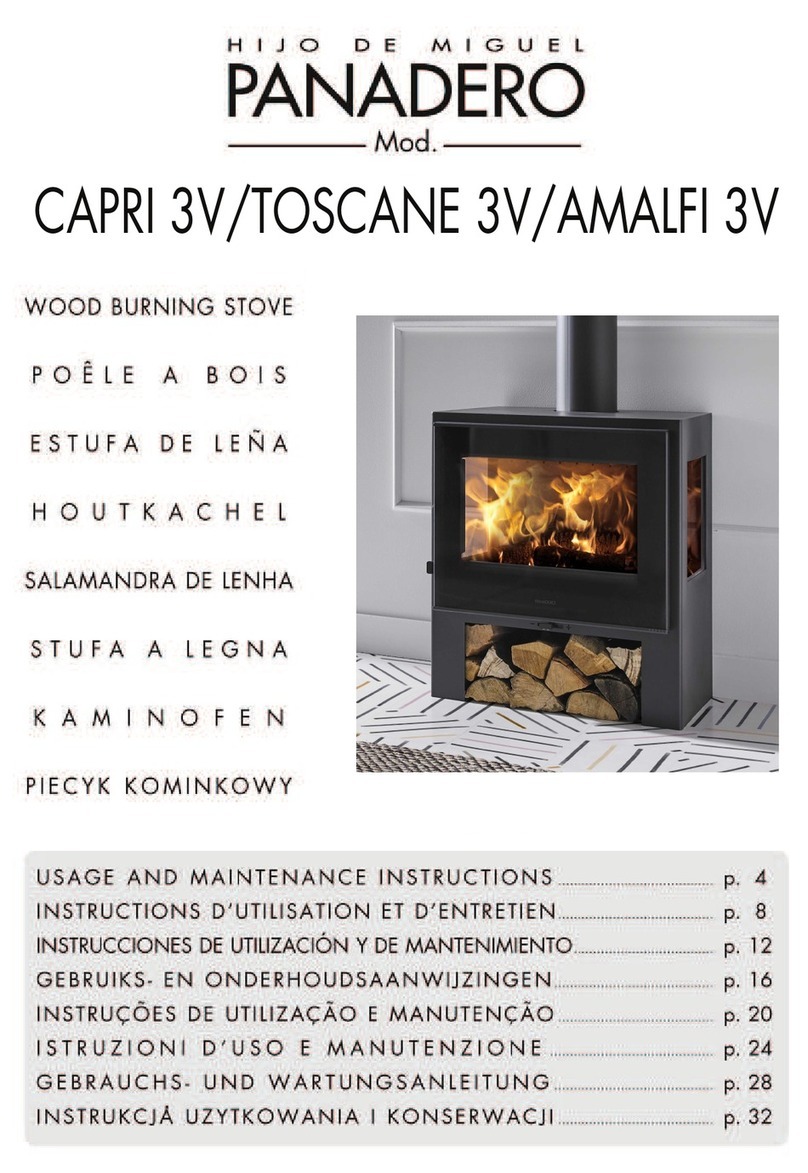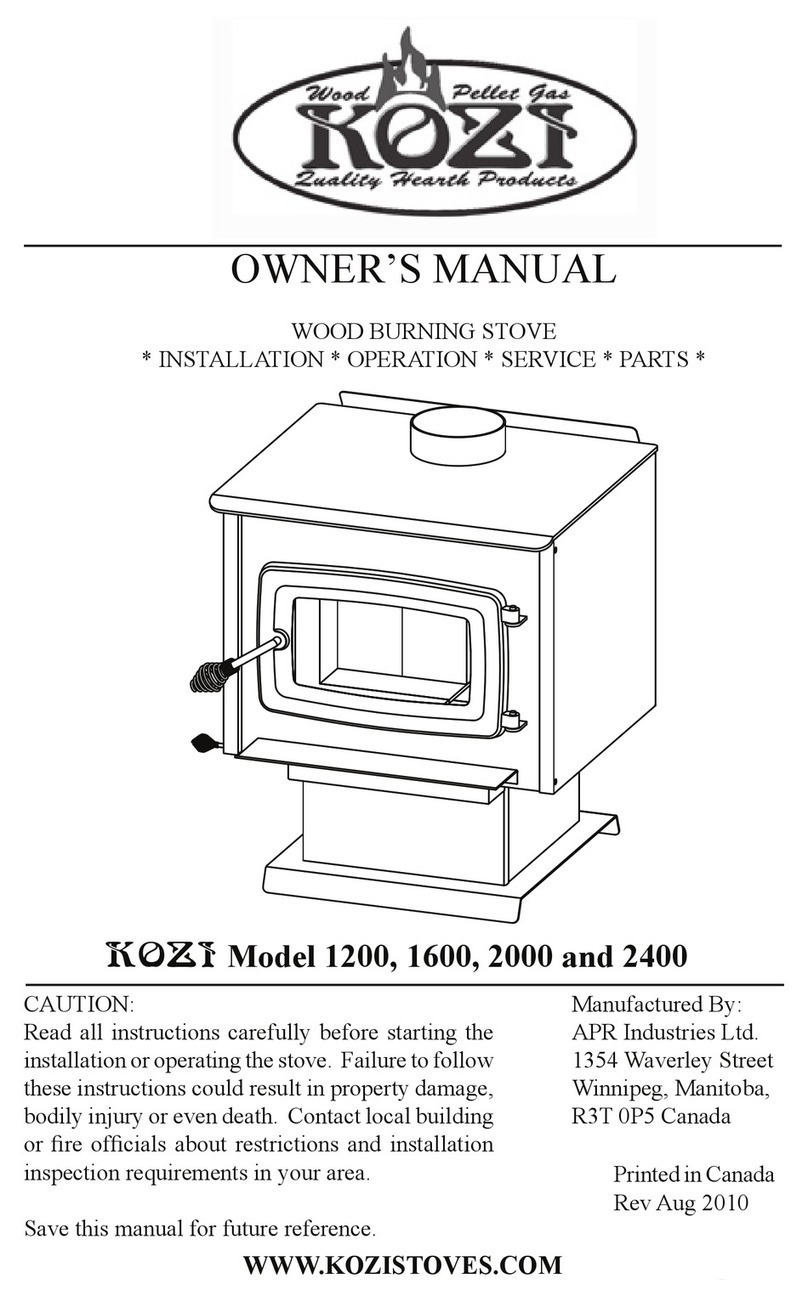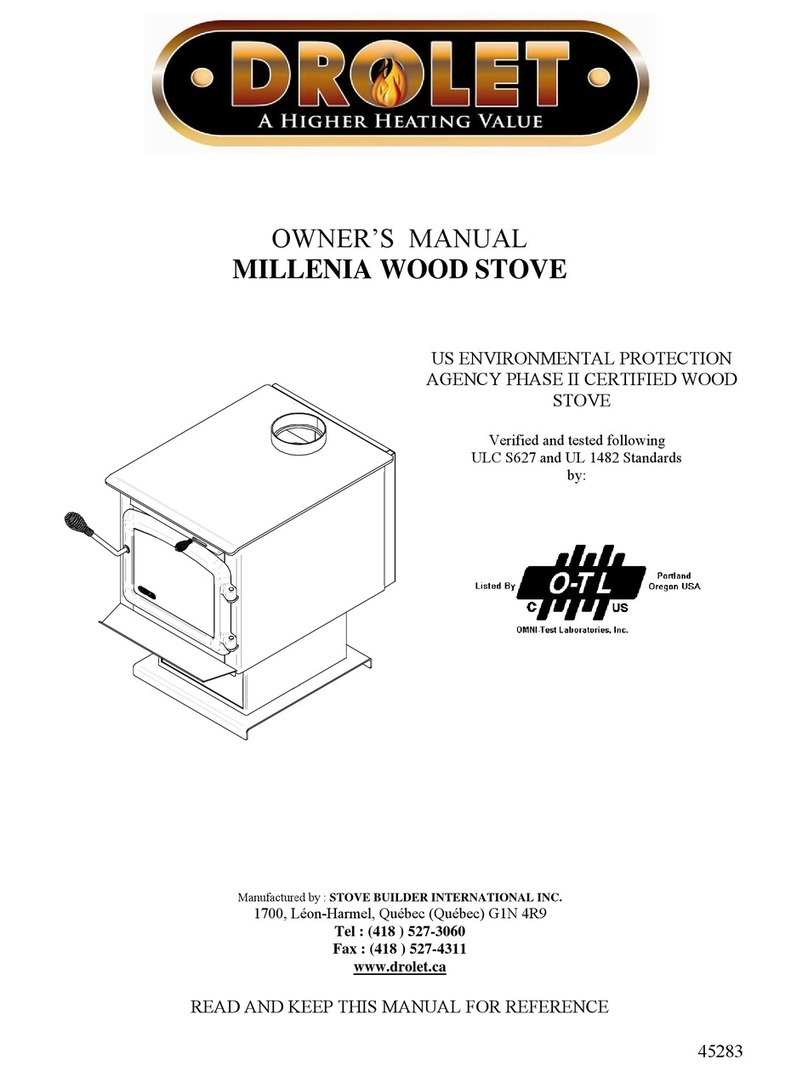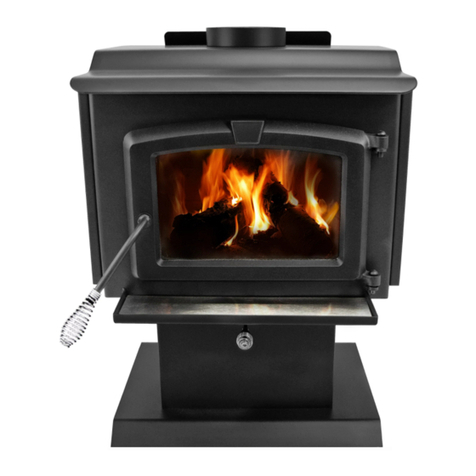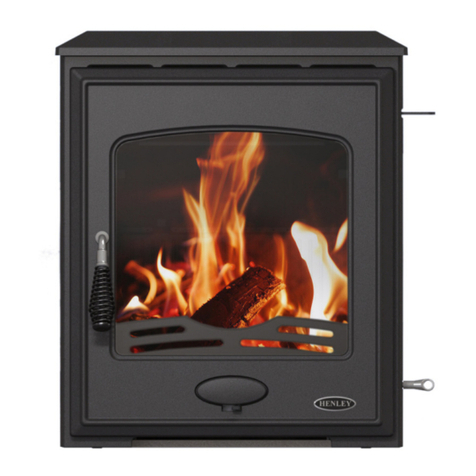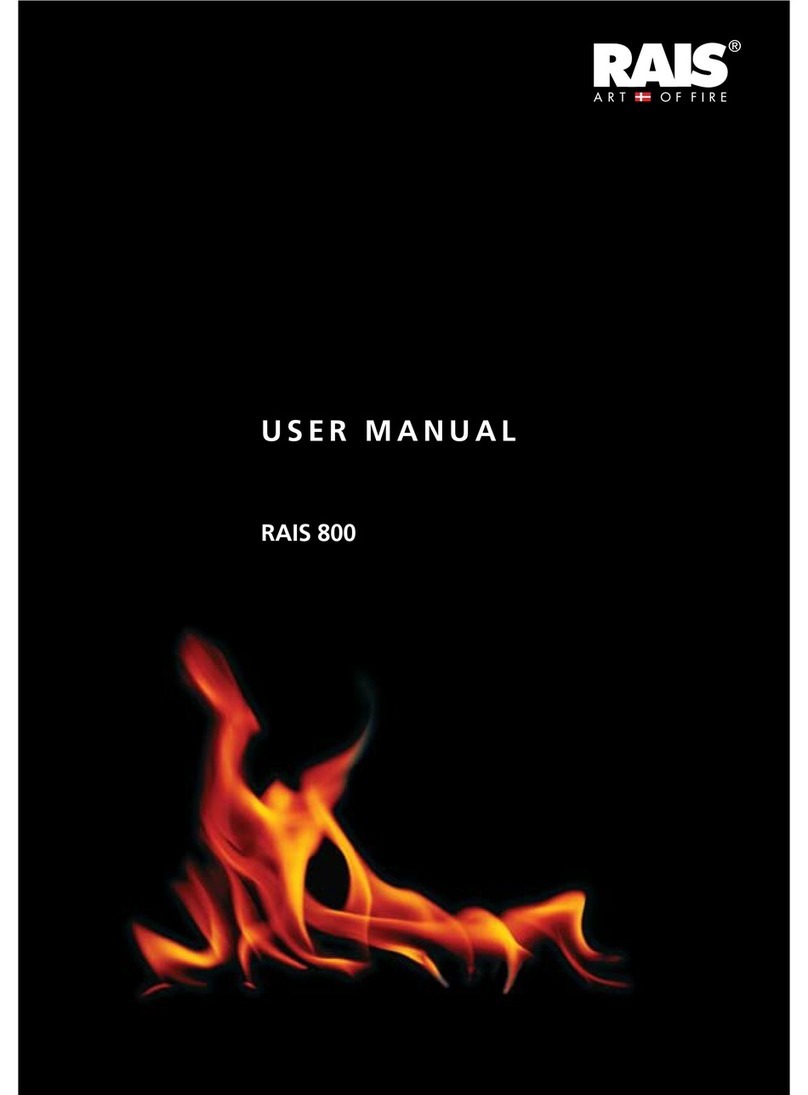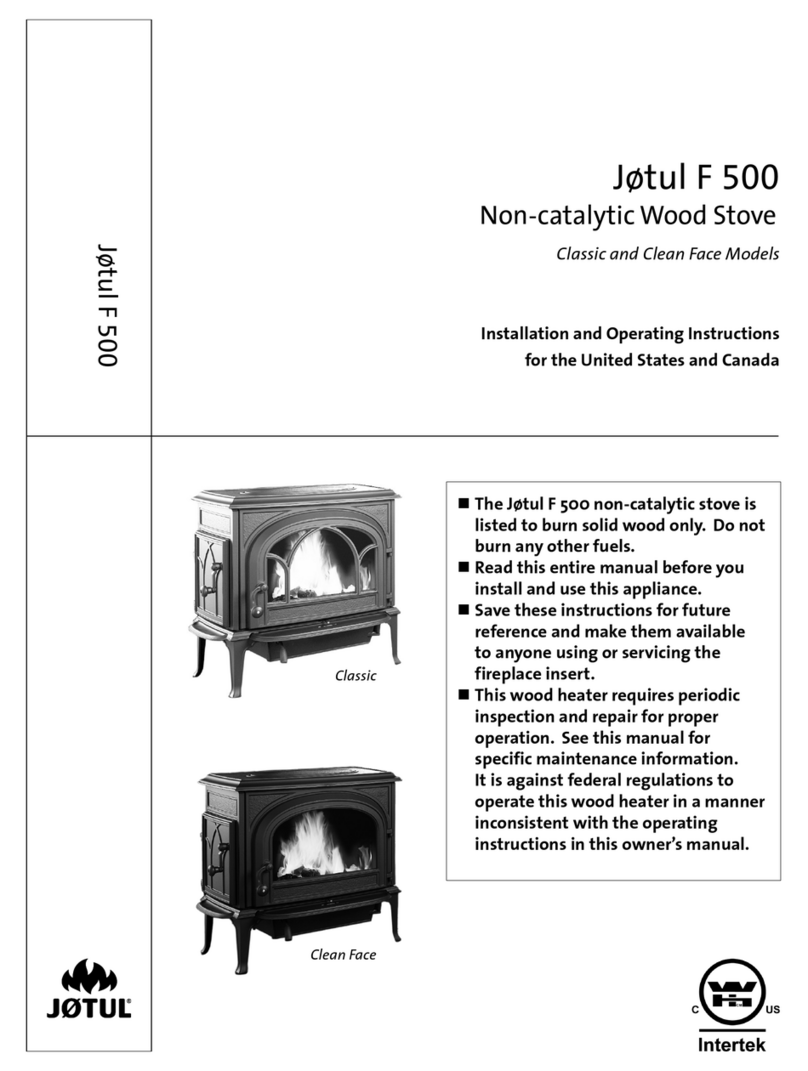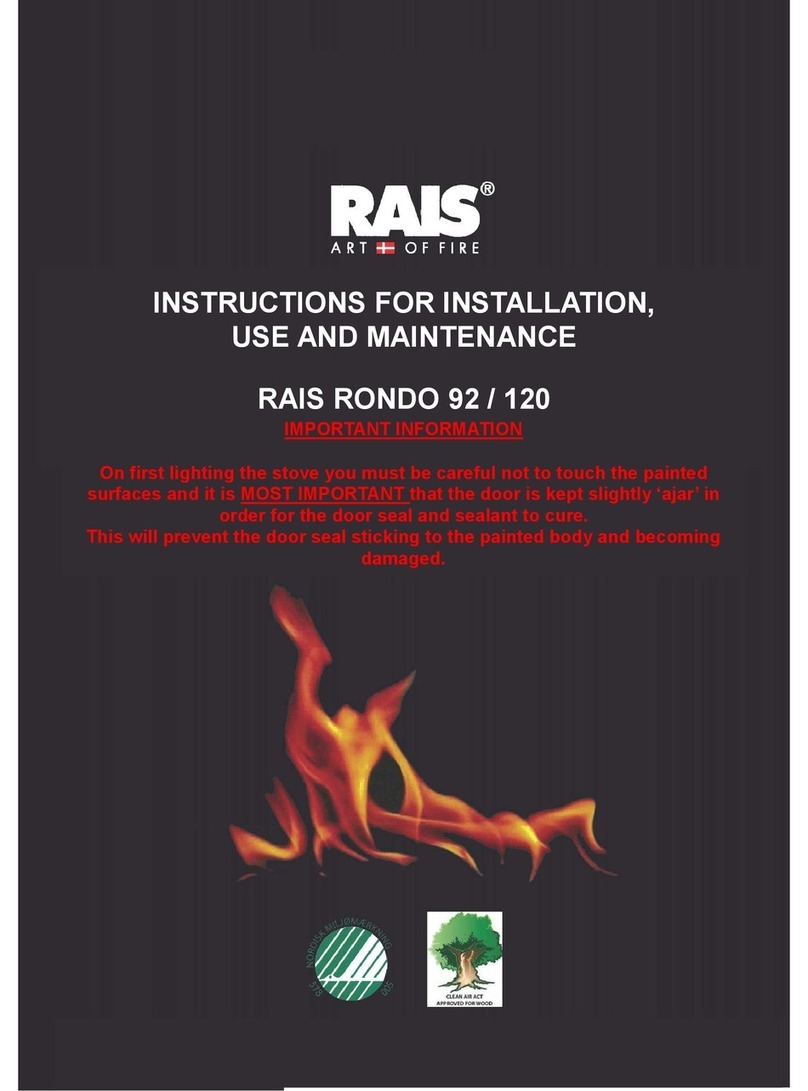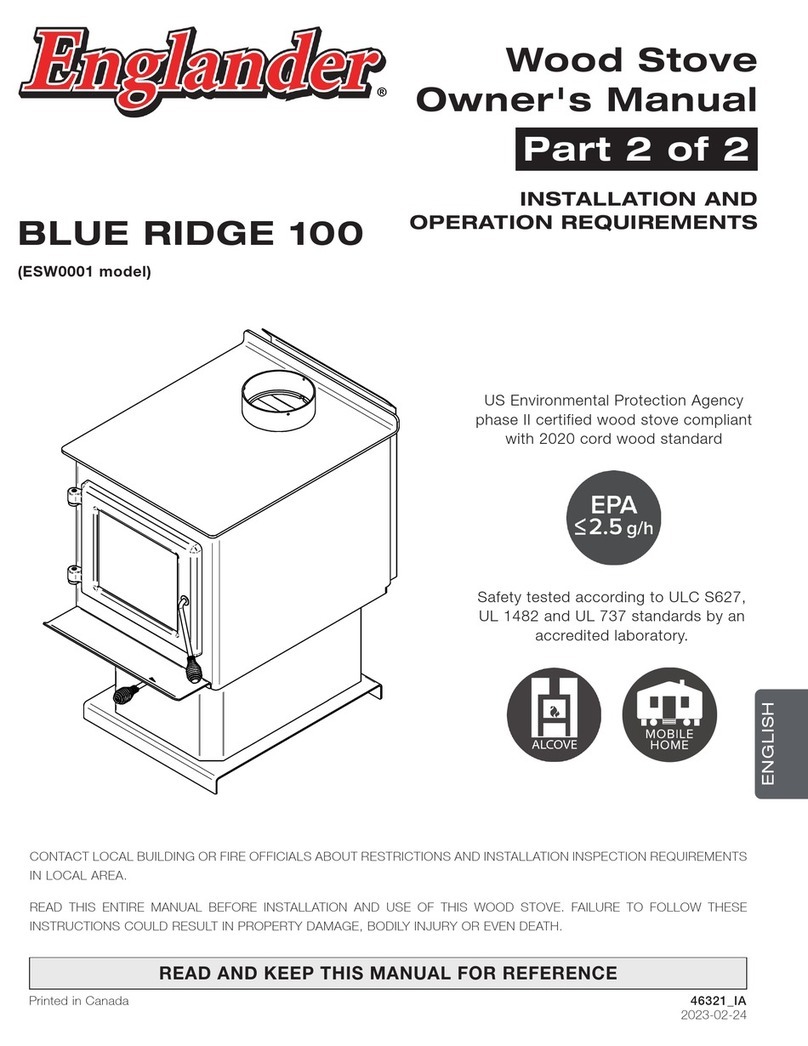
7
Operating Instructions
f) Fully open the air controls of the wood stove and close the door until it is slightly open, allowing for
much needed air to be introduced into the rebox. Never leave the door fully open, as sparks from
the kindling may y out of the stove, causing damage or injury. As the re begins to burn the kindling,
some additional kindling may be needed to sustain the re. DO NOT add more paper after the re has
started.
g) Once the kindling has started to burn, add some smaller pieces of seasoned, dry rewood. Note:
Adding large pieces at the early stages will only serve to smother the re. Continue adding small pieces
of seasoned dry rewood, keeping the door slightly open until each piece starts to ignite. Remember
to always open the door slowly between placing wood into the re.
h) Once the wood has started to ignite and the smoke has reduced, close the wood stove door fully. The
reduction of smoke is a good indication that the draft in the chimney has started to heat up and good
combustion is now possible. Larger pieces of seasoned, dry rewood can now be added when there
is sufcient space in the rebox. Adjust the air control setting to desired setting. Note: The lower the
air control setting, the longer the burn time of your rewood.
2. What type of wood is best to use as rewood?
Both hardwood and softwood burn well in this stove. Both woods contain about 8,000 BTU/lb (18,570
KJ/Kg), but hardwood is generally more dense, will weigh more per cord, and burns a little slower and
longer. Cutting rewood so that it will t horizontally, front to back, makes it easier loading and less likely
for the fuel to roll on the glass. Except for a cold start, there is no need to crisis-cross the logs. Ideal
length for the logs used in the 1200-C would be about 16“ (381 mm) but it can burn pieces up to 18”
long. Ideal length for the logs used in the 1700-C would be about 18“ (381 mm) but it can burn pieces
up to 20” long logs. Burn only dry, seasoned wood. It produces more heat and less soot or creosote.
Freshly cut wood has about 50% moisture. A 10 pound (4.5 Kg) log contains 5 pounds (2.3 Kg) of water.
To season rewood, split and stack it so that air can get to all parts of the wood. Burn beach wood only
if its salt content has been washed away in a season of rain and then the wood dried. To prevent smoke
spillage when refueling, fully open the damper and open the door slowly.
3. What does dry, seasoned wood mean?
Wood that has been dried for a period of one year in a well-ventilated and sheltered area would be
considered dry, seasoned wood. Wood from slow-growing trees is generally considered better than wood
from fast-growing trees. To season rewood, split and stack it so that air can get to all parts of the
wood.
4. Will following the above-listed steps for starting a re mean perfect results every time?
The quick answer is ‘most of the time’. There are many variables that may affect your success when
starting a re. Most of those variables and how to deal with them will be learned through experience.
Your ability to start a good re will signicantly increase with time and patience. Some of the reasons for
poor stove performance will be covered in the next section of these instructions.
5. Why can’t I get the re lit?
Damp or wet wood and poor drafts are the main reasons for poor results in starting a re. Always use
dry, seasoned wood for your re. Even wood dried for two years will be difcult to ignite if it has become
wet.

